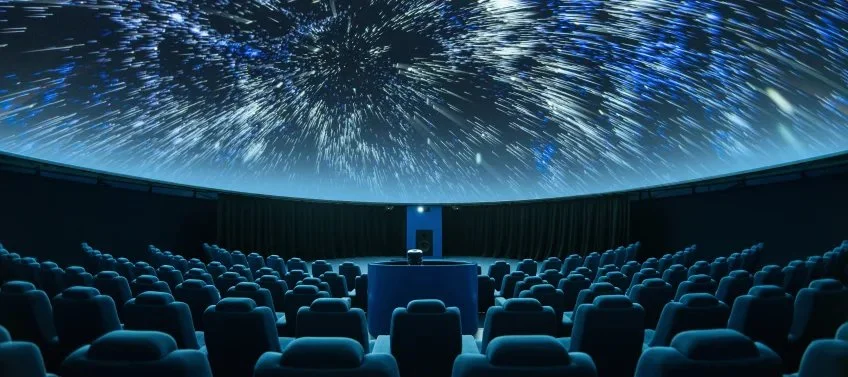
Planetariums

A planetarium is a place where you can go to see what the night sky looks like. Planetariums have a large room with a dome-shaped ceiling and many seats. A special projector in this room can shine images on the domed ceiling and show you the stars and other objects in the night sky.
-

Adler Planetarium
Chicago
Built in the 1930s, the Adler Planetarium carries the distinction of being the first planetarium in the western hemisphere. The planetarium is massive, featuring three distinct theaters, a variety of special exhibits, and an observatory. Its central location along the banks of Lake Michigan provides stunning views of the downtown Chicago skyline. It is easy to spot Adler Planetarium with its distinctive art deco architecture, 12-sided shape, and the domed top. Chicago's winters are notoriously rough, with bone-chillingly cold temperatures and blinding snow. Be sure to check the forecast before heading to Adler.
-

Burke Baker Planetarium
Houston
This popular planetarium calls the Houston Museum of Natural Science its home. Crowds flock to the planetarium for its Digistar 6 advanced simulator that delivers an exhilarating experience. NASA even uses this facility to train its astronauts. Although Houston is not known for its winter weather conditions, torrential rains and flooding may be common during the summer months.
-

Griffith Park Observatory & Samuel Oschin Planetarium
Los Angeles
This free observatory is the most visited of its kind in the world. Inside the stunning building, you will find the Samuel Oschin Planetarium, a separate observatory, and vast exhibition space. The grounds are also a popular place to gaze out over the Los Angeles skyline and the iconic Hollywood sign. Southern California is known for its beautiful year-round climate, making it easy to find a day to visit this observatory and planetarium.
-

Local Planetarium
Local
Your local planetarium is a great place to start your journey exploring everything that you can learn from this type of scientific experience. Many science museums feature planetariums, making it a good idea to check with these places first. Your local university is also a great place to check to see if they offer a planetarium or any other astronomy program.
-

Morrison Planetarium
San Francisco
This Bay Area gem is part of the California Academy of Sciences, located in Golden Gate Park. As the biggest all-digital planetarium in the world, the 75-foot dome provides an educational representation of what you will find in the night sky. San Francisco boasts a moderate yet chilly climate, with almost any day being a great day to visit the Morrison Planetarium. If you want to explore the Golden Gate Park, be sure to bring along a jacket.
-

Hayden Planetarium
New York City
Located in the American Museum of Natural History adjacent to Central Park, the Hayden Planetarium is part of the Rose Center for Earth and Space building. Operated by the museum's Department of Astrophysics, this massive planetarium features a 2,000-ton and 87-foot diameter sphere. The planetarium offers two different theaters for shows and events. New York City is known for its unpredictable weather that can change on a dime, making it essential that you stay up-to-date on conditions when you visit the planetarium.
-

Morehead Planetarium and Science Center
Chapel Hill, North Carolina
This extraordinary planetarium served as the training ground for astronauts for the Apollo and Gemini spacecraft. As the first planetarium in the South, it resides on the campus of the University of North Carolina. The full-dome planetarium features two different projection systems. The climate in the Research Triangle of North Carolina is varied and unpredictable, necessitating that you keep on top of conditions before planning your day at the Morehead Planetarium.
-

Albert Einstein Planetarium
Washington, DC
As part of the venerable Smithsonian National Air and Space Museum, it is no wonder that the Albert Einstein Planetarium is one of the top planetariums in the world. This world-class planetarium features a state-of-the-art Sky Vision Dual projection system to create an amazing viewing experience for visitors. While at the planetarium, be sure to check out the Phoebe Waterman Haas public observatory and all of the flight simulators and exhibits in the main museum. Spring in Washington, DC is an excellent time to visit with moderate temperatures, and the cherry blossoms on full display in the nearby National Mall.